1997 Wayfarer
Serial No. 8017
|
|
 |
| This boat was built from a Wayland marine kit in 1997 by Shaun Mueller and is in excellent condition. I bought it from Shaun last November and planned to sail it extensively, but we ended up buying a 30' Monk cruiser and it's taking up all of our time this summer, so we decided to sell the Wayfarer to someone who would actually sail it. |
 |
Since last November, I've been working on the Wayfarer, fixing a damaged frame and refinishing the hull inside and out. There are over 10 coats of Epifanes varnish on the deck, thwarts and seats. I made new splashboards and did a lot of other minor work. The mast is spruce - I stripped it and coated it with epoxy and then many coats of Epifanes, same with the mahogany boom. |
 |
I painted the bilge and the floorboards with Easypoxy and replaced a lot of the hardware. |
 |
| I rebuilt the trailer, licensed it and applied for a title, which it never had. I have clear title for the Wayfarer and the trailer title should be here next week (June 15). The boat and trailer have registration good through 2008. |
 |
| |
 |
| All rigging included, this boat is ready to be sailed. Rudder is mahogany and the centerboard is steel - while not legal for a racing Wayfarer, the heavy steel centerboard adds good stability to an already very stable boat. |
 |
The boast is 15'10" long and has a six foot beam.
More technical details about the Wayfarer class can be found here: http://www.uswayfarer.org/ |
 |
The hull is all mahogany plywood and was built on official building jigs, so it will measure for racing. |
 |
| |
 |
| |
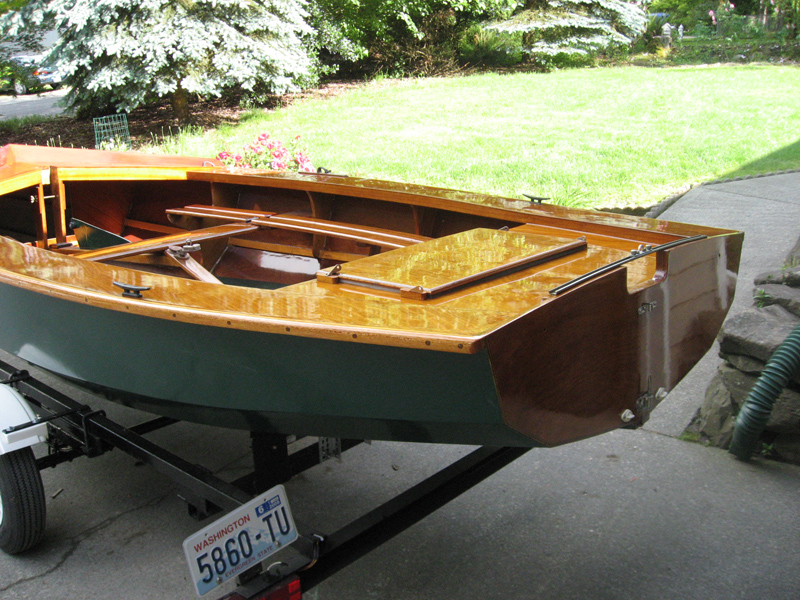 |
| |
 |
| |
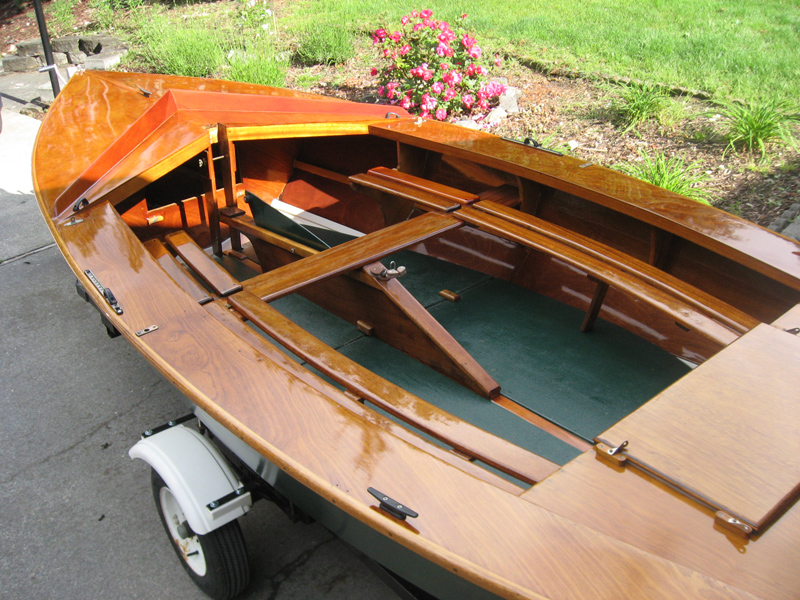 |
| |
 |
| |
 |
| The sails are from a Geary 18, not Wayfarer sails. The measure almost exactly the same as Wayfarer sails, but would not be legal for racing. Sails are in good condition - no spinnaker. |
 |
New photos showing the boat rigged for sailing. |
 |
| |
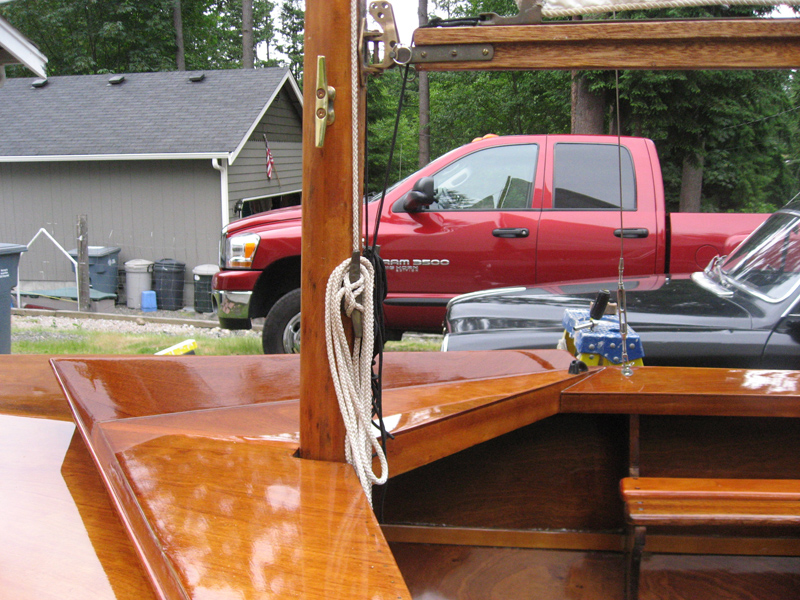 |
| |
 |
| |
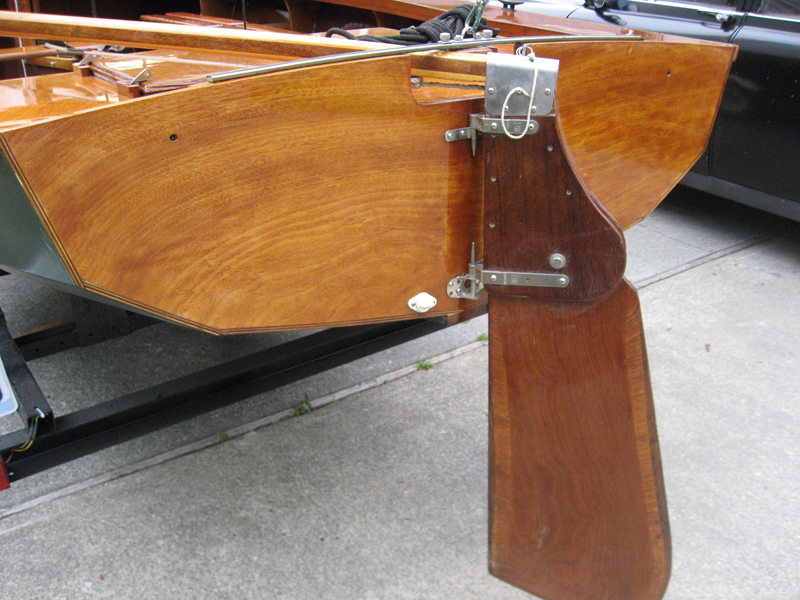 |
| |
 |
| |
 |
| |
 |
| |
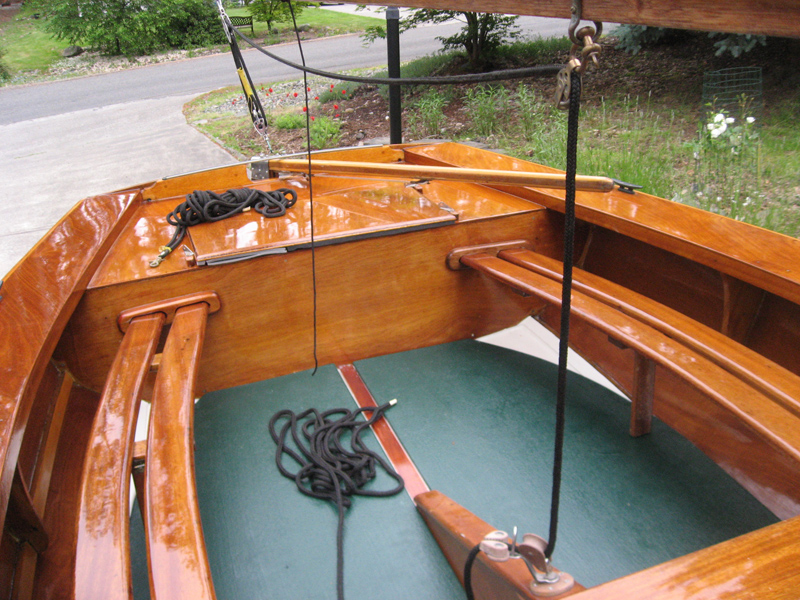 |
| |
 |
| |
 |
| |
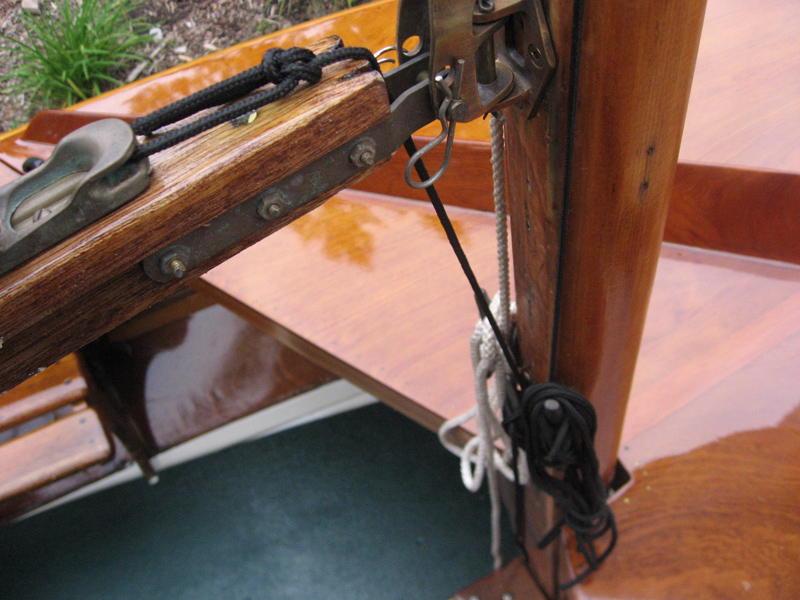 |
| |
 |
| |
 |
| |
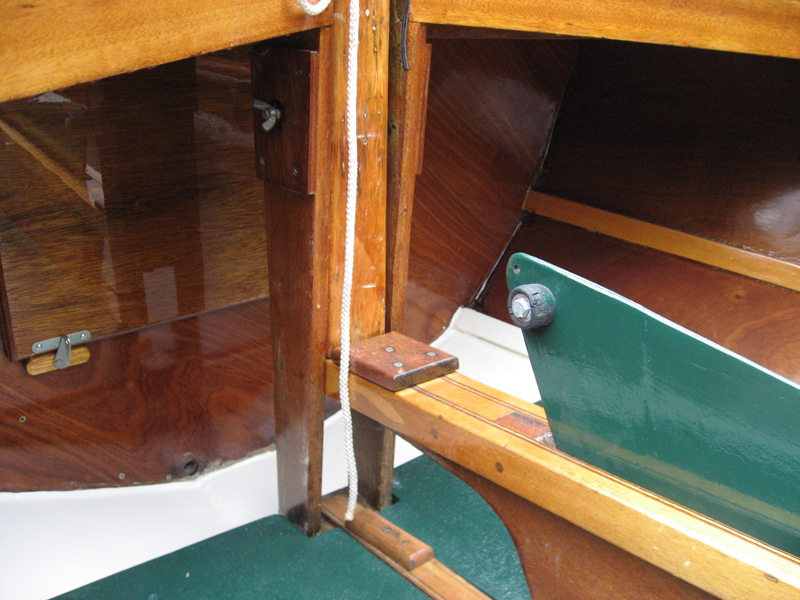 |
| |
 |
| |
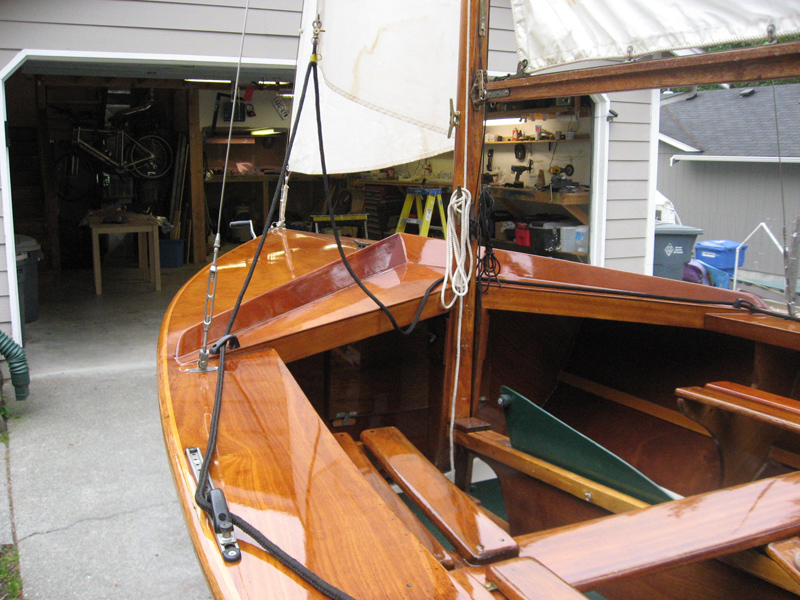 |
| |
 |
| |
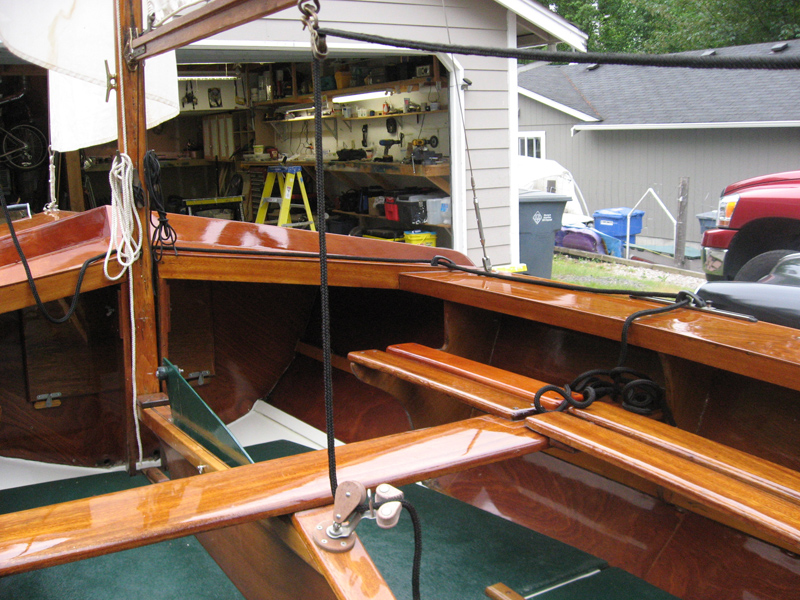 |
| |
 |
| |
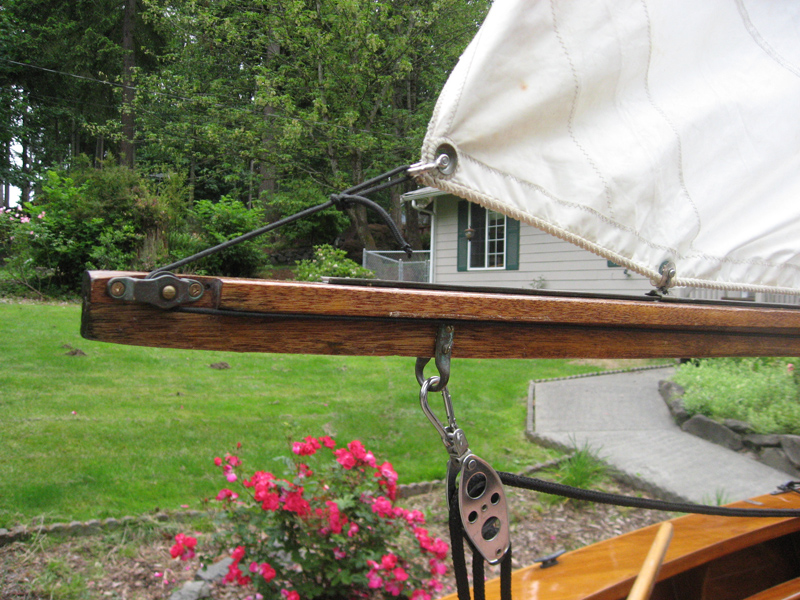 |
| |
 |
| |
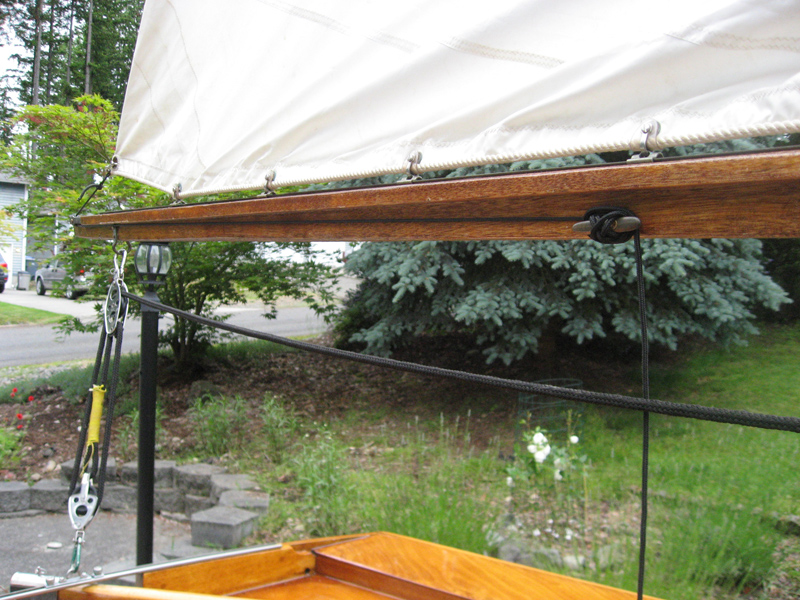 |
| |
 |
| |
 |
| |
 |
| |
 |
| |
| |
| The following photos show the damage I found after purchasing the boat and bringing it home last November. This damage was caused by the poorly set-up trailer. I fixed the trailer so the hull has proper support now. |
| |
| |
November 2006 |
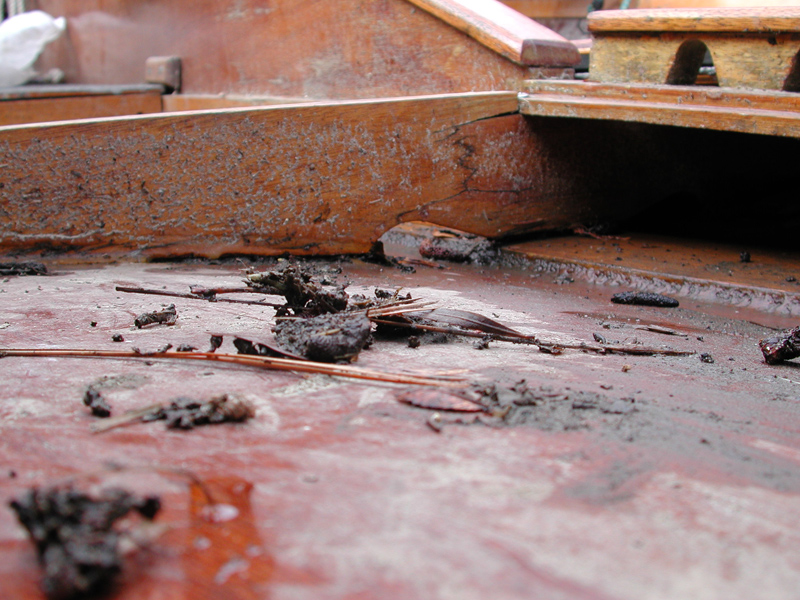 |
Above - the cracked frame pulling away from the keel. |
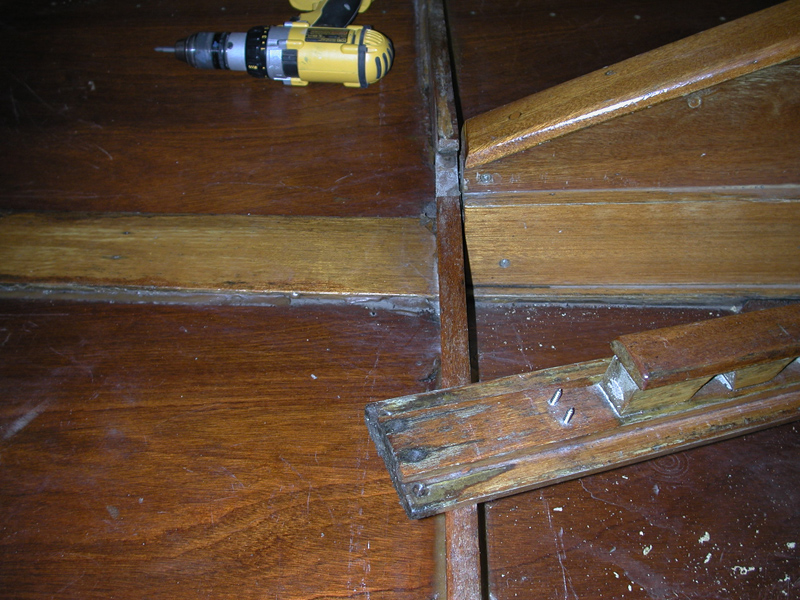 |
| Above - the keelson is removed to gain access to the frame. You can see the gap between the cracked frame and the aft edge of the centerboard case. |
 |
| Above - the damaged frame is pulling away from the hull skin on the left, the epoxy joint there has failed and there's dirt in the seam. |
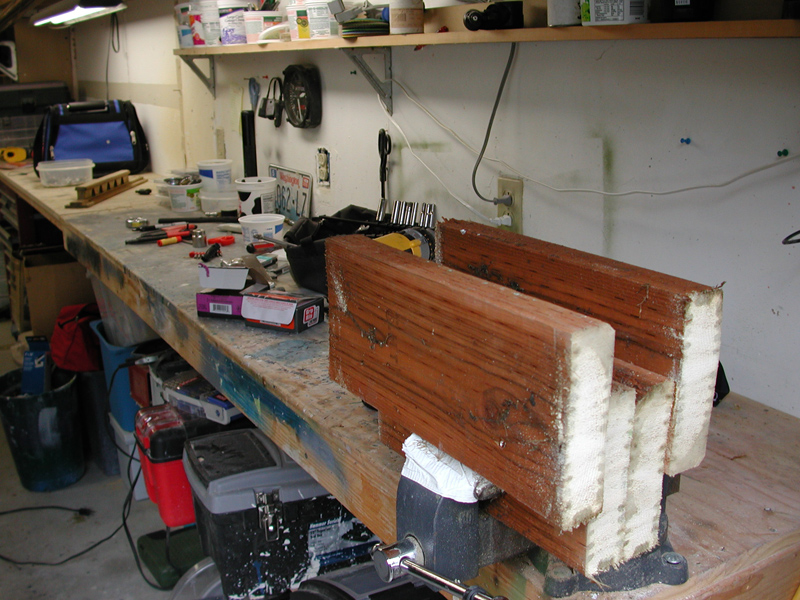 |
| I make a temporary trailer support for the keel so that when I remove the frame, the bunks don't do more damage to the hull. |
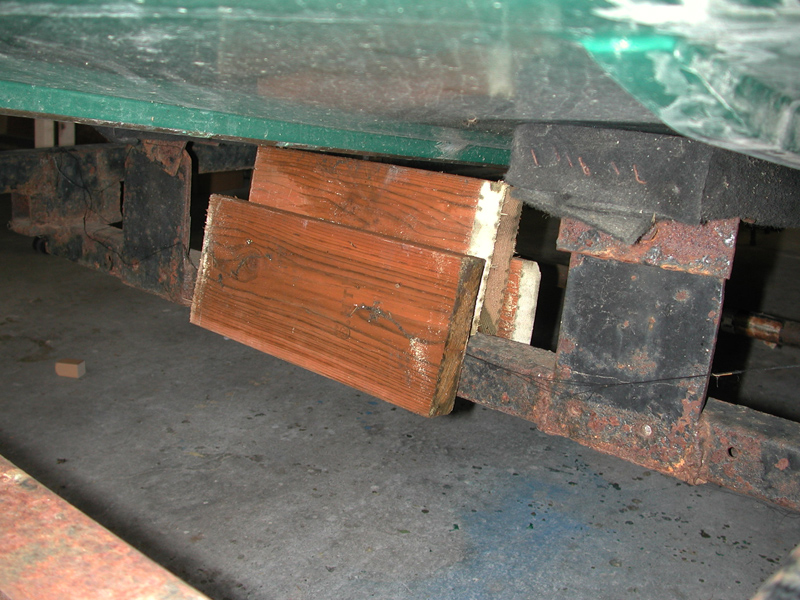 |
| Below - I remove the bunks and set the keel on the 2x8 temporary support structure. |
 |
| |
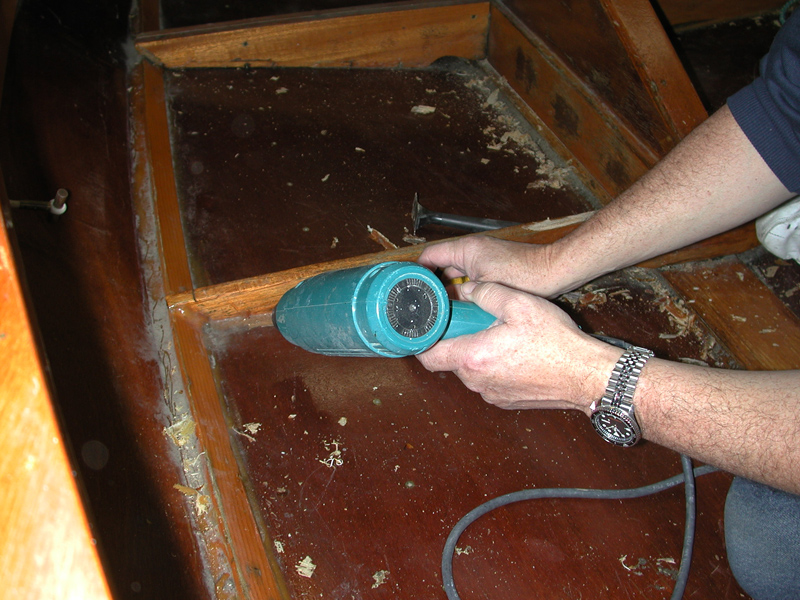 |
| Above - I use my heat gun to remove the epoxy fillet gluing the frame to the hull. Photos by Renee, who is so glad I have another project to keep me occupied. |
 |
| Below - Renee got a good photo of the failed glue joint and frame crack, the frame is only held in now by the screws that extend through the outside of the hull into the bottom of the frame. |
 |
| So, the screws come out next. I scrape away some paint to locate the screws, pick out the filler with my pick and remove the screws from the frame. |
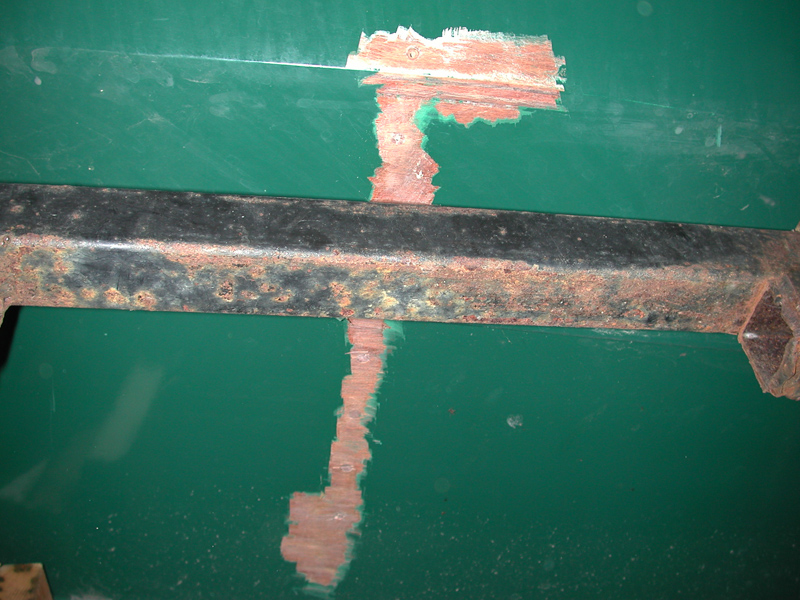 |
|
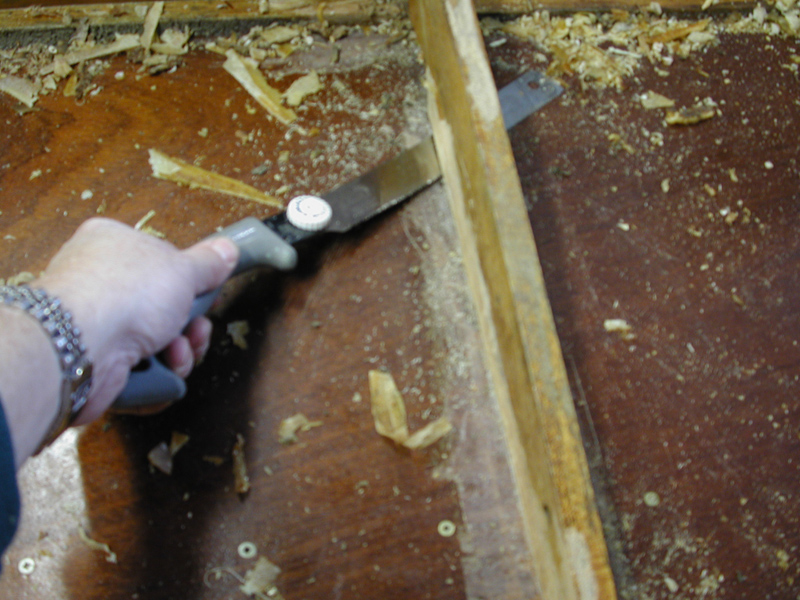 |
| I use a Japanese backsaw on the right side of the frame to cut the remaining epoxy joint between the hull and frame. On the left side of the frame, no cutting was needed because the glue joint had already failed. |
 |
Here is the removed from next to the keelson. |
 |
| The hull skins are OK, with just two enlarged screw holes where I had to pry out two fasteners that were trapped between the bilge keels and the outside of the hull, no problem, that's what filled epoxy is for. You can see the remnants of the frame on the right where the epoxy joint held very well and the dark stain of the failed glue joint on the left where water and dirt got into the faying surface between the frame and the hull. |
 |
| Above - I finish cleaning up the hull skin and discover a small area of rotted plywood (just above the last screw hole). I'll have to hog that out and fill it. Otherwise, the hull really appears to be in very good condition. |
 |
I scrape some more varnish before giving it a quick sand and take the rest of the day off. |
 |
| |
 |
New mahogany boards to make the new frame. |
 |
| |
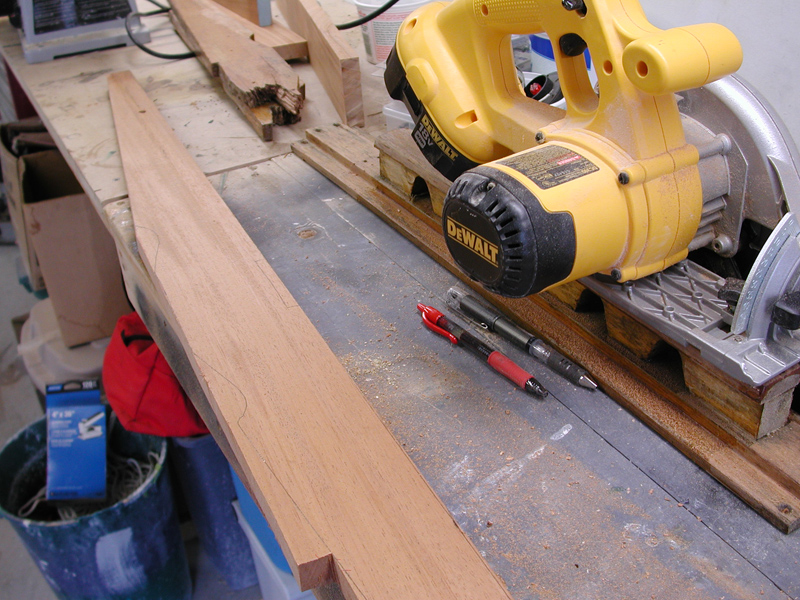 |
| |
 |
| |
 |
Making a new keelson to replace the water-damaged original. |
 |
| |
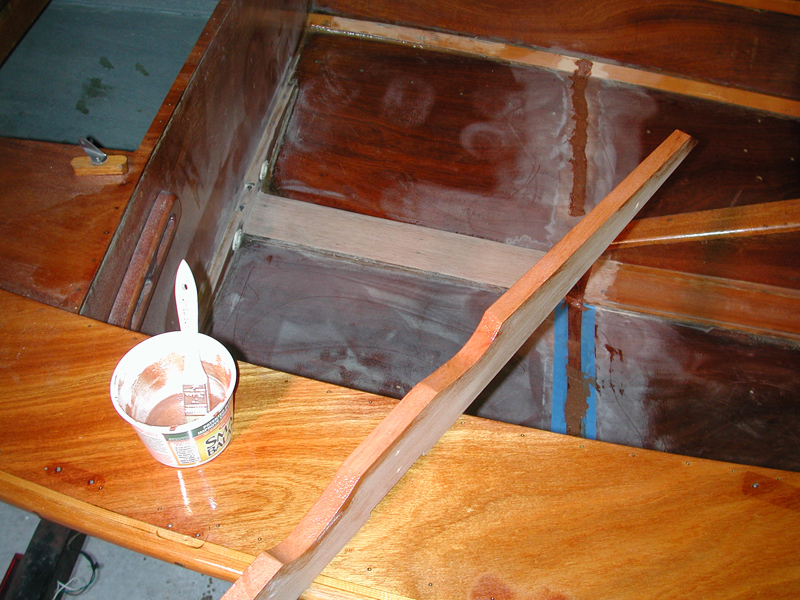 |
Using West System epoxy to reinstall the new frames and keelson. |
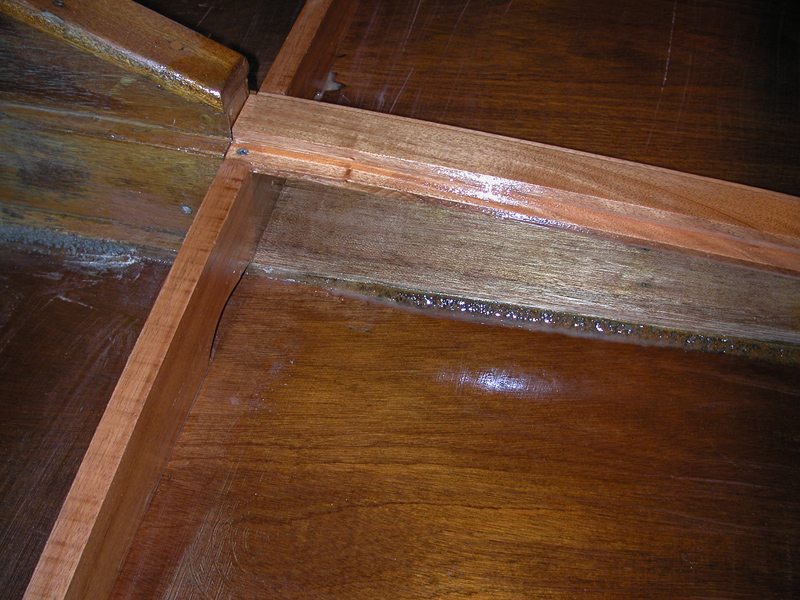 |
Everything thoroughly coated with epoxy. |
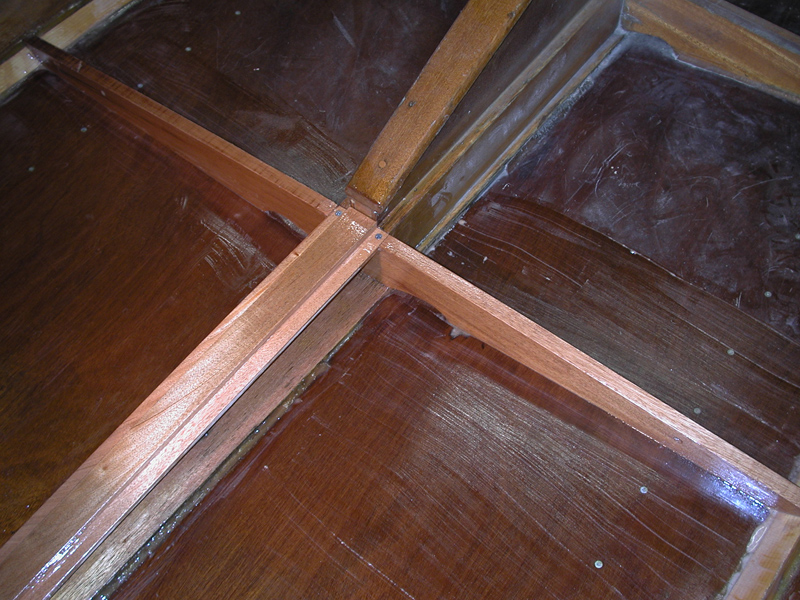 |
| Below - I fabricated a new keel roller so the hull will be properly supported by the keel. The bunks will serve only to hold the hull upright - they should take none of the hull's weight, it should all be on the keel. |
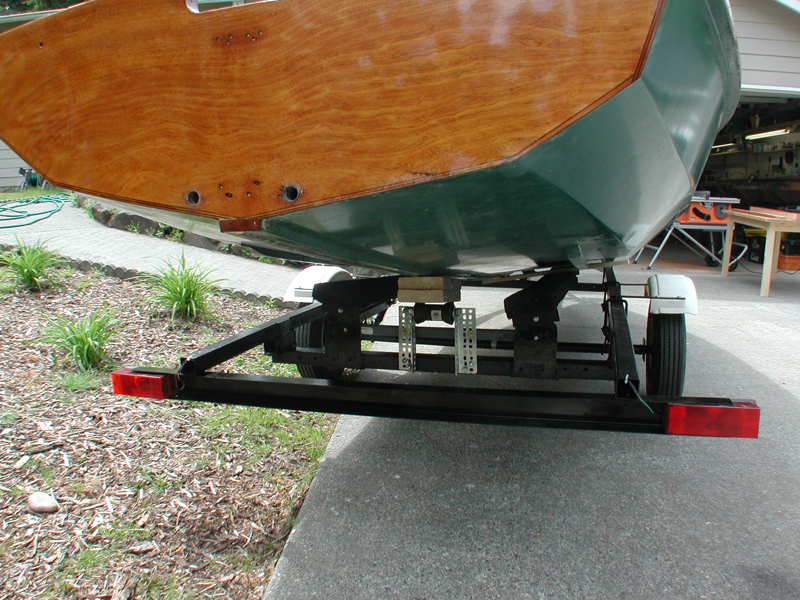 |
| |
| |
| |
| |



































































